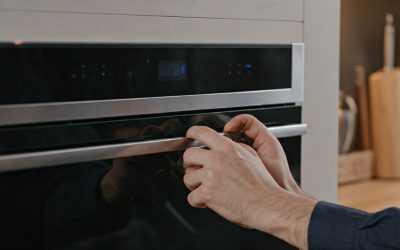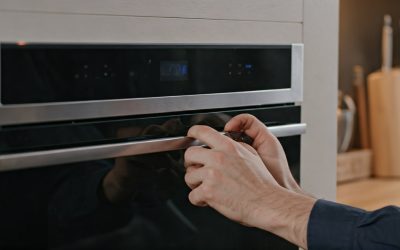“Why is my Viking appliances leaking?” Dealing with leaks in your Viking appliance can be a hassle. Many people get upset when they see water under their fridge or when a dishwasher leaves a wet spot on the floor. Even when you have a Viking fridge or another strong appliance, these things can happen. Over time, parts like the water line may clog or seals could wear out. That is why you get leaks.
If you know the cause, you can fix the problem. First, find out where the leak starts. Then, take care of it while it’s small. This will help stop bigger leaks and keep your appliance working well. When you do this, your Viking appliance should go back to normal. If you use some simple steps, you will save time, keep your home dry, and get the good results you want. Ready to look over easy ways to stop leaks?
Identifying Common Causes of Leaks in Viking Appliances
Leaks in Viking appliances can happen because of inside problems or things happening outside the machine. Let’s look closer at why these leaks happen:
1. Improper installation or connection
When Viking appliances like dishwashers or fridges aren’t put in the right way, the smallest problems can cause leaks. One common source of leaks is if the water line to your fridge is not tight and secure, you may see leaks. If your Viking fridge is not even on the floor, water can collect on one side and leak out.
If you see water coming from your Viking fridge, check the water line. Make sure it is secure and not loose. Also, look at the fridge and see if it stands evenly on its legs. These details may look small, but missing them can lead to bigger leaks in the future.
Dishwashers can also get leaks if hoses or water valves aren’t lined up right. You can avoid most of these problems by getting a professional to install your Viking appliances. If you put them in yourself, check all parts after the job. This will help keep your kitchen free of big issues. If you still have trouble with your fridge or dishwasher and can’t see what is wrong, it may be good to call a pro for a checkup. A professional assessment can give you peace of mind with your Viking fridge and dishwasher.
2. Wear and tear on seals or gaskets
Viking refrigerators use strong seals and gaskets to keep the door tight and the inside cold. But, over time with a lot of use, these parts start to wear out. When the seal gets cracks or feels loose, warm air can get inside. This causes water drops and can make leaks in the appliance.
Check the gasket around the Viking refrigerator door for any signs of wear. Use your fingers to look for tears or places that feel hard. If you find any damage, you should get a new seal. This helps your Viking refrigerator work well and stops leaks.
The gasket in a dishwasher can also break down. If that happens, water can get out while it washes. If you change these parts early, it stops leaks and helps the rest of the parts last longer. Small damage to seals in any appliance, like a Viking refrigerator, can turn into bigger and more costly problems if you leave it too long. Do you think the seal around your appliance might be the reason for its leaks?
3. Clogged or damaged water lines
Blocked water lines are a common problem, especially in Viking dishwashers. Over time, the lines can get filled with food bits or minerals. If you notice your appliance has leaks, it is a good idea to start by checking the water lines.
- Check for obstructions: Look over the dishwasher hose and the inlet to see if you find any things blocking the way. Sometimes pieces of food or other stuff get stuck.
- Replace damaged lines: Hoses that are cracked or look old can often cause leaks in dishwashers. Check well for splits or parts that seem loose.
Viking refrigerators can also have trouble if the water supply system to the ice maker or dispenser is not working right. Broken lines there can cause leaks inside and sometimes pools of water under the appliance. If you try to fix it and do not see any change, a technician can help you find and fix water line problems.
4. Malfunctioning water inlet valve
The water inlet valve in your Viking fridge is important. It controls how water moves to the ice maker and the water dispenser. If this drain tube part has a crack or wears out, water can leak out and you may see it on the floor under the fridge.
You have to look at the fridge closely to find the problem. When you see water at the bottom of the refrigerator, turn off the water supply. Check the inlet valve for any drips or loose parts. These can be signs that the valve is broken.
Changing the valve can be a bit harder to do, but it keeps your Viking fridge working well. Viking Professional Service is a good choice to fix or change your inlet valve. This can help your appliance last longer. Let experts do this job to stop other problems before they happen. Do you notice any leaks or signs of wear on your fridge?
5. Defective door seal or latch
A broken door seal changes the inside air of Viking fridges. This causes extra moisture and leaks around the fridge. A bad latch can also stop the door from closing all the way. This makes more air and dampness get inside.
To check the seal, put a piece of paper along the door’s edge and close it. If you can pull the paper out without effort, then the seal is not doing its job. When air moves through a weak seal, it leads to water puddles near your Viking appliance. If you see cracks or spots that don’t look right, change the seal to fix this fast.
The latches must be watched for damage or if they do not line up well. These help your fridge door stay shut tight. Broken seals or bad latches make your appliance work harder than it should. Because of this, leaks can keep coming back. Fixing the problem on time means your fridge works well. Could your Viking fridge have leaks because of one of these reasons?
When to Call Viking Professional Service for Expert Repairs
While you can fix small leaks in your Viking appliance by yourself, some bigger problems need a pro. Viking Professional Service is good at finding and fixing things like bad water valves or broken drain pans. We guarantee that our trained technicians can handle any issues with expertise. No matter the complexity of the problem, they’ll ensure your appliance operates efficiently and safely. Contact us today to schedule an appointment.
Conclusion
“Why is my Viking appliances leaking?” Fixing water leaks in your Viking appliance is very important. It helps keep them working well and makes sure they last longer. Many of these leaks start because of things like bad installation or seals that wear out over time. If you know what to look for, you can check and fix small issues before they get worse. Doing regular checks can stop little problems from turning into big, costly ones. But if you are not sure what to do or feel stressed about the repairs, it is a good idea to ask a professional for help. To learn more about how to take care of your appliance, you can look at our other blog post on How to Reset Viking Appliances. Your appliances should always get the best care!
Frequently Asked Questions
How often should Viking appliance seals be replaced?
Viking appliance seals should be changed every two to five years. This will depend on how much you use the fridge and how much wear there is. You should look at the seals often. If you see leaks, it is time to replace them. This helps the viking appliance work better. It also stops moisture from building up in the fridge.
What are the signs that my Viking appliance’s water filter needs changing?
If your water filter leaks, you might see that water moves slower. The water can taste odd too. Sometimes, the filter is not set right inside the appliance. When a filter is clogged or cracked, water can drip or make a small pool in the appliance. Changing the filter often helps stop these leaks from coming back.
How serious is a leak from my Viking appliance, and when should I call a professional?
A leak from your Viking appliance can damage floors and internal components. If checking seals, drains, or hoses doesn’t resolve the issue, it’s best to call a professional. They can safely repair your appliance and prevent further problems, such as malfunctioning water valves.





